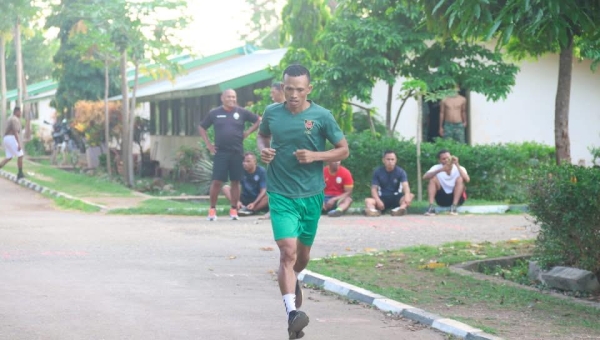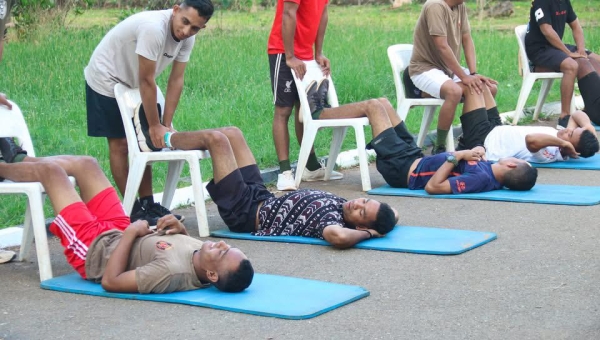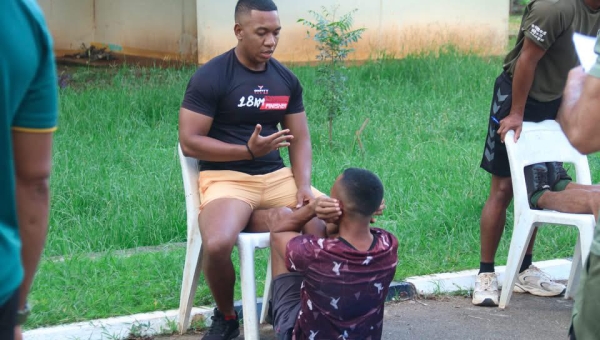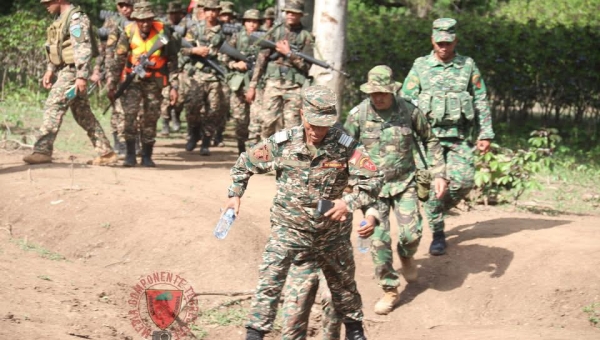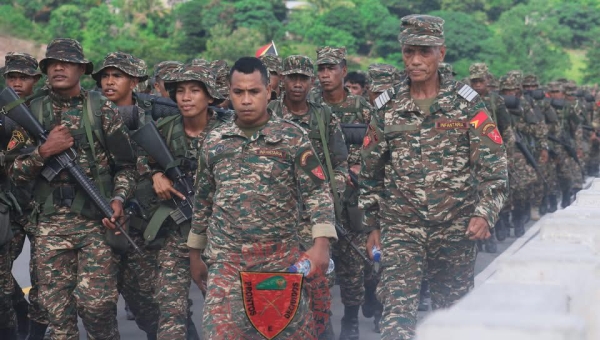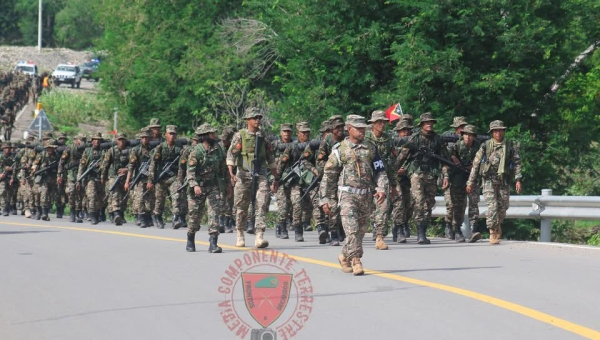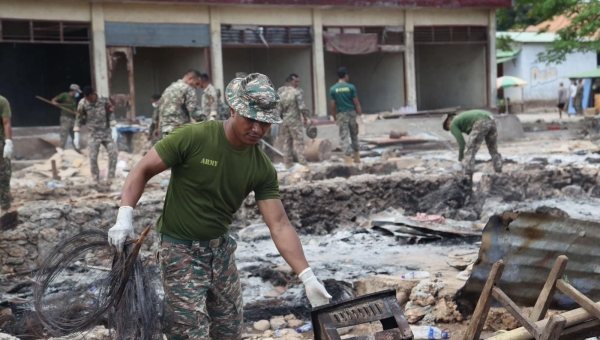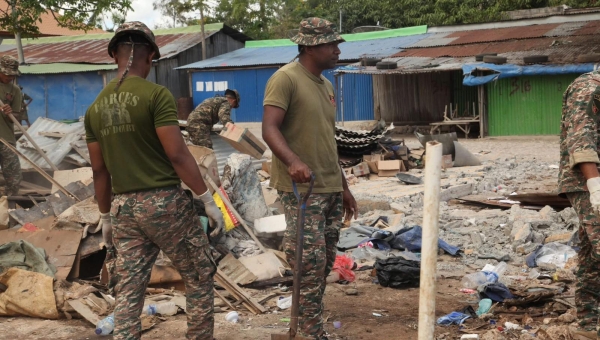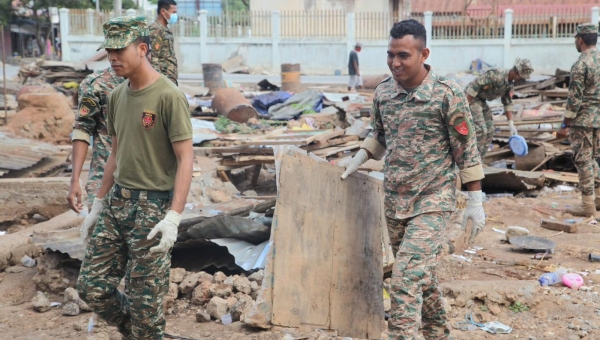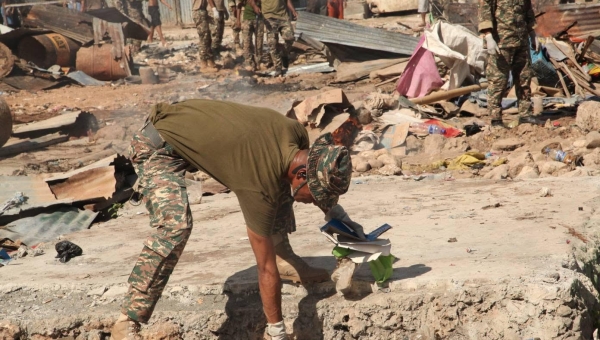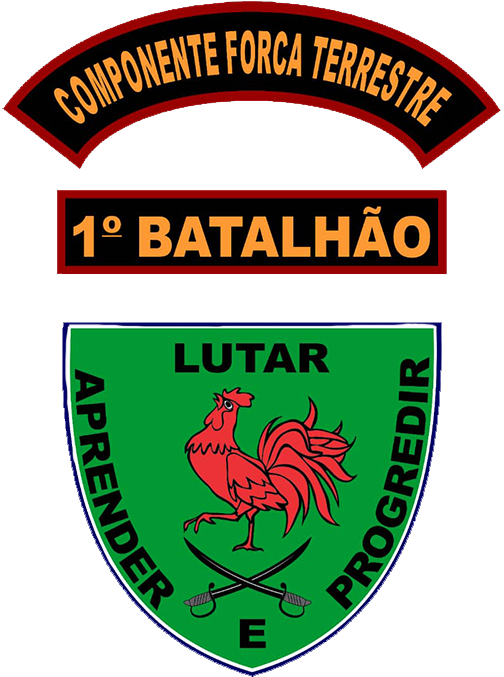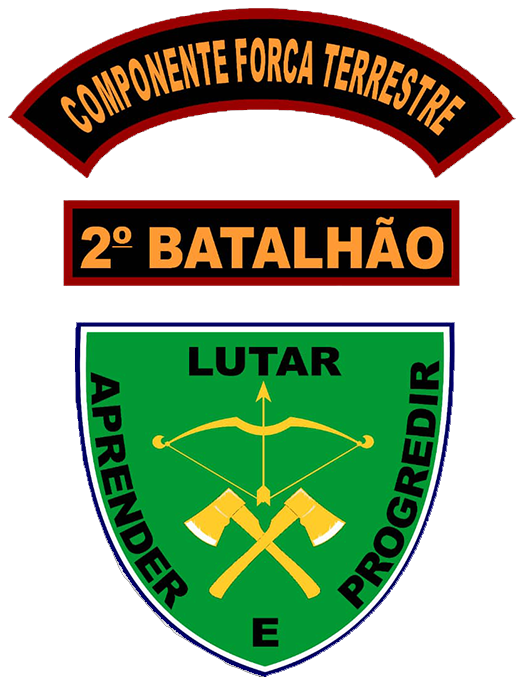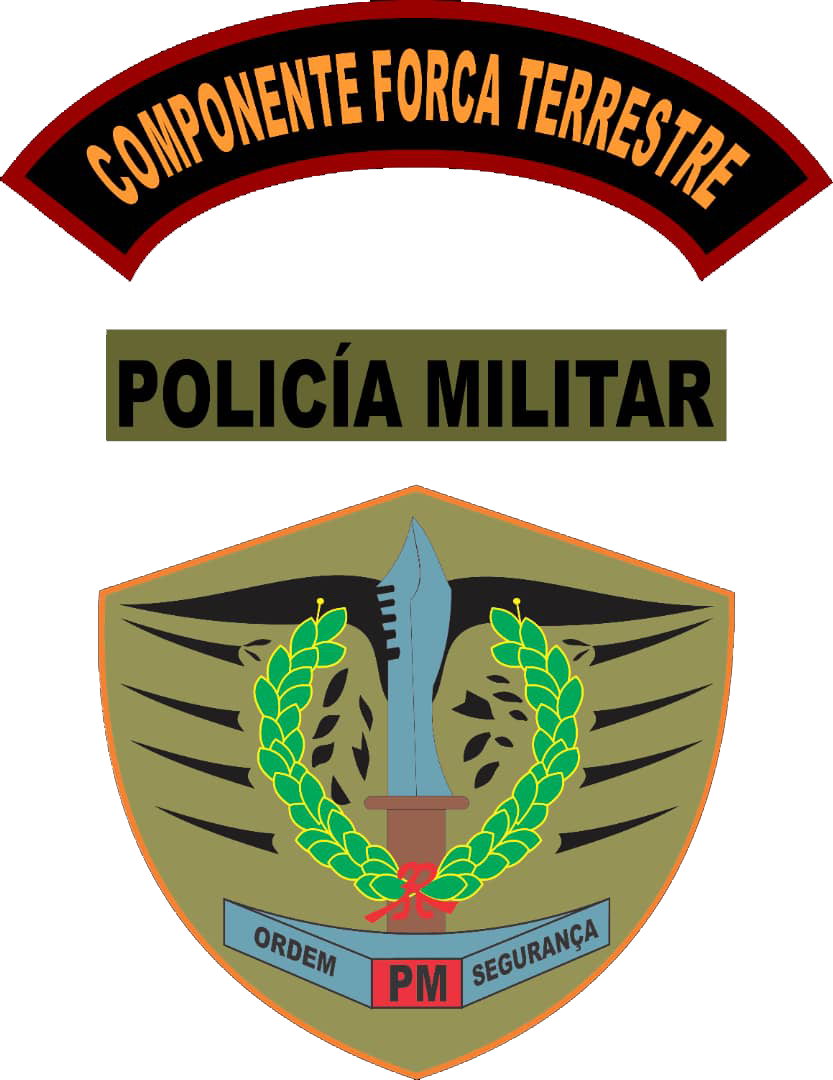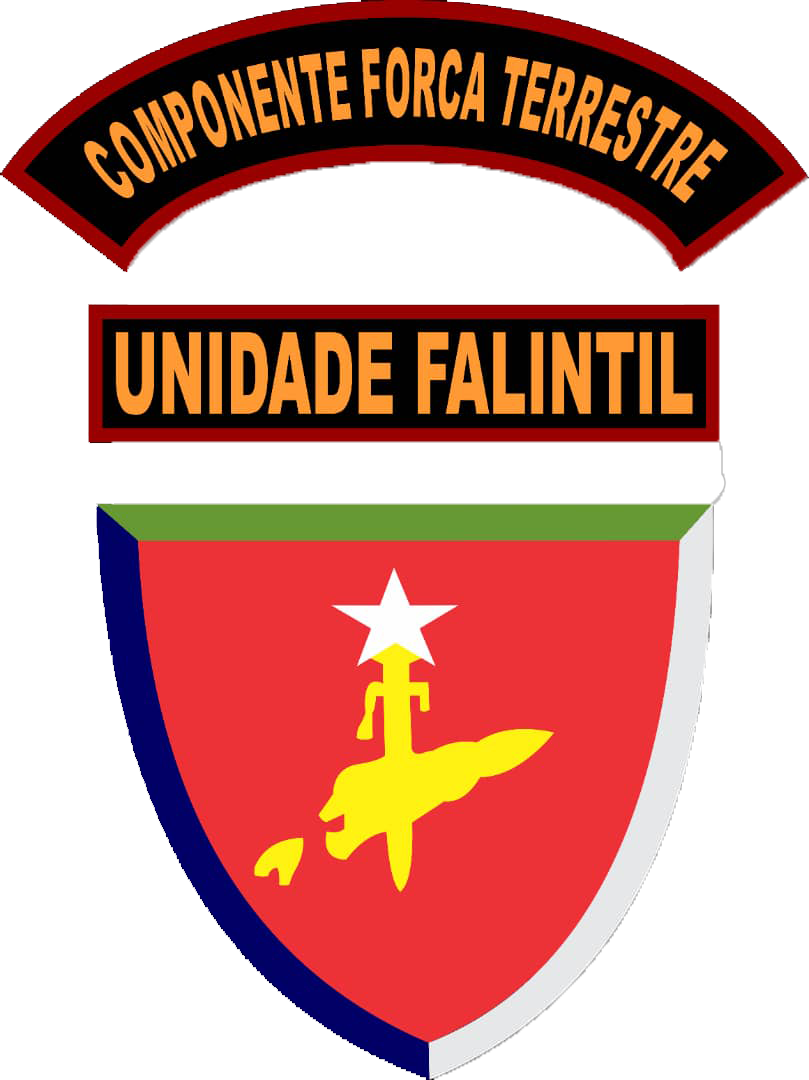Land Component
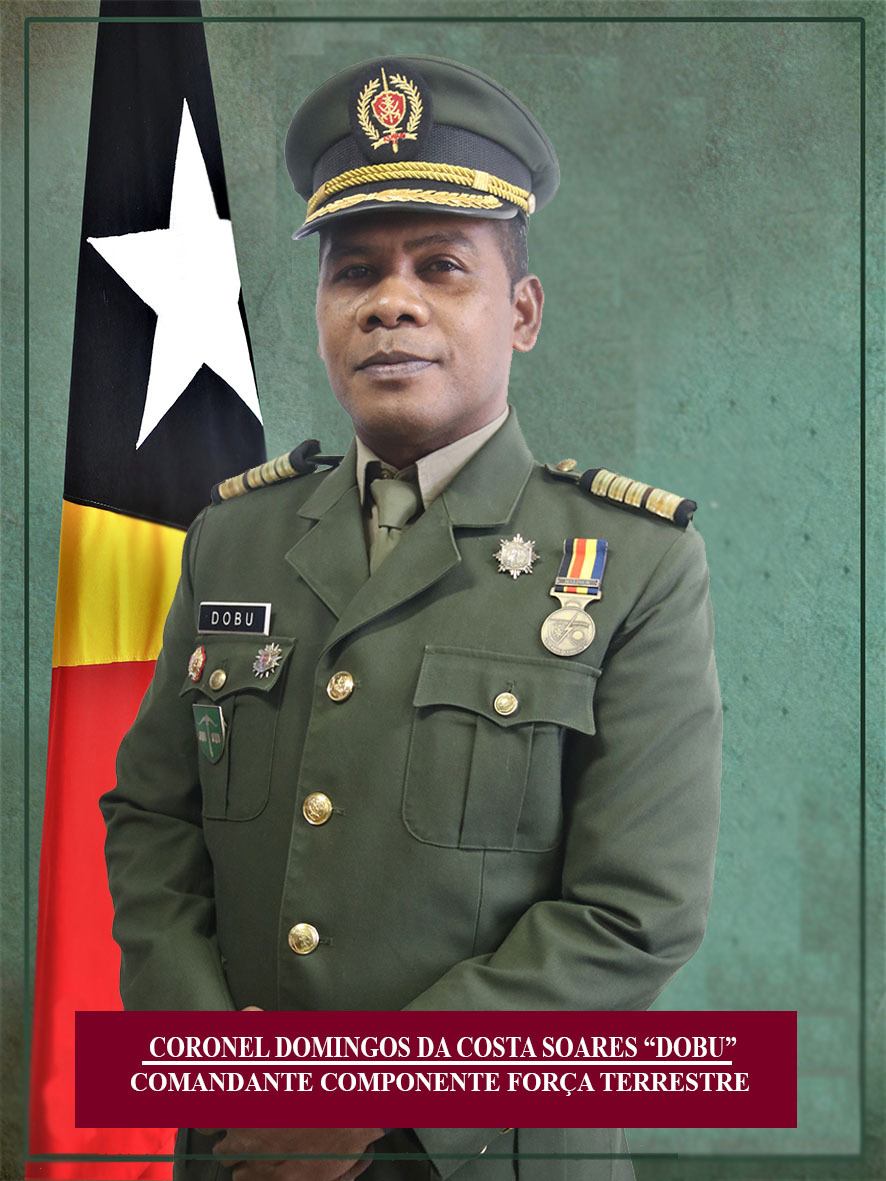
Coronel Domingos da Costa Soares “Dobu”
Ground Component Commander
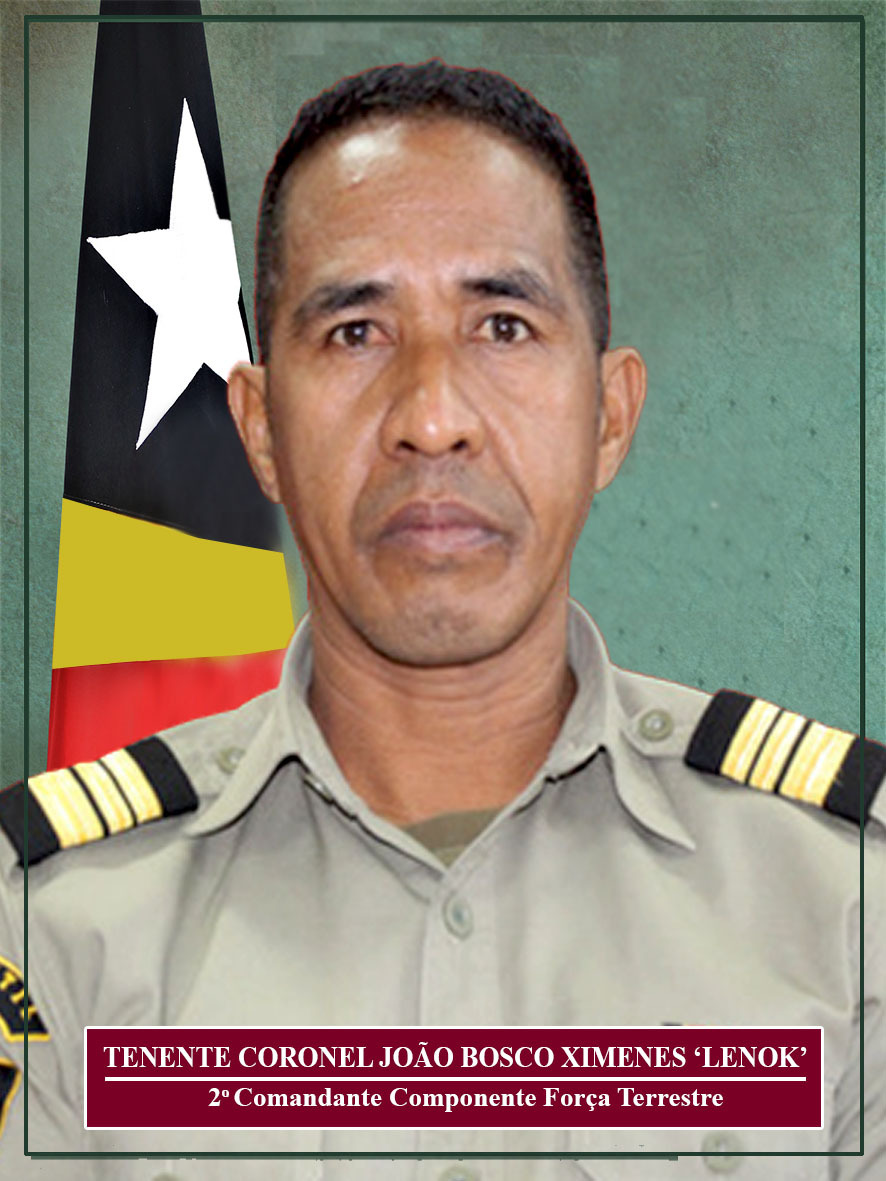
TCor. João Bosco Ximenes “Lenok”
2° Ground Component Commander
The Land Component of the F-FDTL: Structure, Missions, and Capabilities
The Land Component of the Armed Forces of East Timor (F-FDTL) plays a crucial role in the national defense and maintenance of public order in East Timor. As an integral part of the armed forces, the Land Component is responsible for protecting the country's territorial integrity and ensuring security, as well as contributing to international peacekeeping and cooperation missions. This force, composed of combat, support, and service units, faces unique challenges due to the country's geographical and political context, as well as the evolution of its operational capabilities since its creation.
History and Evolution of the F-FDTL
The history of the F-FDTL is marked by East Timor's struggle for independence. During the Indonesian occupation (1975-1999), the Timorese resistance, composed of various factions including the Armed Forces for the National Liberation of East Timor (FALINTIL), played a vital role in the fight for independence. After the 1999 referendum, which resulted in the choice for independence, and the subsequent transition period under the administration of the United Nations, East Timor achieved its sovereignty in 2002.
The creation of the F-FDTL was formalized in 2001, with the mission of defending the country and promoting peace internally. Since then, the Land Component has evolved, facing challenges such as the construction of a modern military force adapted to the needs of the country, including combat operations, disaster response, and peacekeeping.
Structure of the Land Component
The Land Component of the F-FDTL is one of the main divisions within the structure of the armed forces. It is composed of several units, with the most important being the Infantry Brigade, which includes battalions and specialized companies. The structure of the Land Component can be detailed as follows:
1. General Command: The Land Component is directly under the command of the F-FDTL Command and coordinated by senior officers with extensive military experience. This command is responsible for the strategic and operational leadership of the land forces.
2. Infantry Units: The primary unit of the Land Component is the Infantry, responsible for direct combat actions and operations in hostile territories. The Infantry Brigade, composed of several battalions, is equipped with a range of light and heavy weaponry, including assault rifles, machine guns, and short-range missile systems.
3. Support and Logistics Units: In addition to combat units, the Land Component also has support units, including engineering, logistics, and communications. These units are essential for ensuring mobility, supply, and maintenance during prolonged operations.
4. Special Units: In more complex security contexts, such as responding to internal or external threats, the Land Component can mobilize special units, such as special operations forces or counter-terrorism units, trained for high-intensity missions.
5. Order Maintenance Units: The Land Component also has responsibilities in maintaining internal order, especially during times of instability or civil unrest. In these cases, the units may be called upon to intervene in crowd control operations, support other security forces, or even in emergency situations.
Operational Capabilities
Despite being a young force, the Land Component of the F-FDTL has made significant progress in its operational capabilities. Some of the key characteristics and capabilities that form its operational structure include:
1. Mobility and Flexibility: East Timor's geography, with mountains, valleys, and an extensive coastline, requires the land forces to be highly mobile and adaptable. The Land Component is in the process of developing logistical and transport capabilities to allow rapid deployment to any point of the territory. The use of armored transport vehicles and motorized units has been a priority to ensure the effectiveness of operations.
2. Combat Capabilities: The infantry units of the F-FDTL possess modern weaponry and training to face various threats, from guerrilla warfare to more conventional operations. However, there are still challenges regarding heavy equipment, such as artillery, tanks, and air defense systems, which are progressively being developed and acquired.
3. Training and Preparation: The training of the Land Component forces is conducted both nationally and through partnerships with allied countries and international organizations. Through bilateral agreements, East Timor has been able to train its troops in joint exercises and peacekeeping missions, enhancing their skills in operations in diverse and challenging environments.
4. Integration with International Forces: As a country with a strong commitment to international peace and security, the Land Component of the F-FDTL also participates in United Nations or ASEAN-led peacekeeping missions. The experience gained in these international scenarios has been fundamental in improving the capabilities of the land forces, as well as ensuring interoperability with other military forces.
Missions of the Land Component
The Land Component of the F-FDTL has several missions, both in times of peace and in times of crisis. Among the main responsibilities are:
1. Defense of Sovereignty and Territorial Integrity: The primary mission of the F-FDTL is to ensure the defense of national territory. Given its strategic location in Southeast Asia and disputes over maritime borders, the protection of East Timor’s land and maritime borders is a priority for the land forces.
2. Maintenance of Internal Order: The Land Component plays an important role in preserving internal stability, being called upon to intervene in cases of unrest, protests, or other security situations involving public order.
3. International Peace and Cooperation Missions: In addition to national defense, the Land Component actively participates in international peacekeeping missions. These missions contribute to regional and global stability, while also providing training and development for Timorese forces.
4. Disaster Response: Due to East Timor’s vulnerability to natural disasters such as earthquakes, tsunamis, and cyclones, the F-FDTL has an essential role in disaster response operations, providing humanitarian assistance and logistical support in emergency situations.
Challenges and Future Prospects
The Land Component of the F-FDTL faces a number of challenges as it adapts to new demands for security and defense. Among the main challenges are:
1. Equipment Capability: Although the Land Component has evolved since its creation, there are still limitations in terms of heavy and modern equipment. The acquisition of armored vehicles, missile systems, aircraft support, and other technologies is a priority to ensure that the Timorese forces can operate effectively.
2. Training and Capacity Building: Continuous training of troops, both in military tactics and emergency response skills, will be crucial for maintaining operational readiness. Partnerships with allied countries such as Japan, Australia, and other ASEAN members will be important to achieve this goal.
3. Integration with Regional Forces: As an active member of ASEAN and other regional organizations, East Timor has worked to strengthen military cooperation with neighboring countries, which will contribute to the ongoing development of its defense and security capabilities.
The Land Component of the F-FDTL is a fundamental pillar for the defense of East Timor, playing an essential role in protecting national sovereignty, responding to disasters, and contributing to regional and international peace. Despite being a relatively young force, the F-FDTL has shown significant progress in its operational capabilities, with a focus on mobility, flexibility, and commitment to international missions. However, the challenge of adequately equipping and training its forces remains, requiring continuous investment in infrastructure, technology, and human resources.




